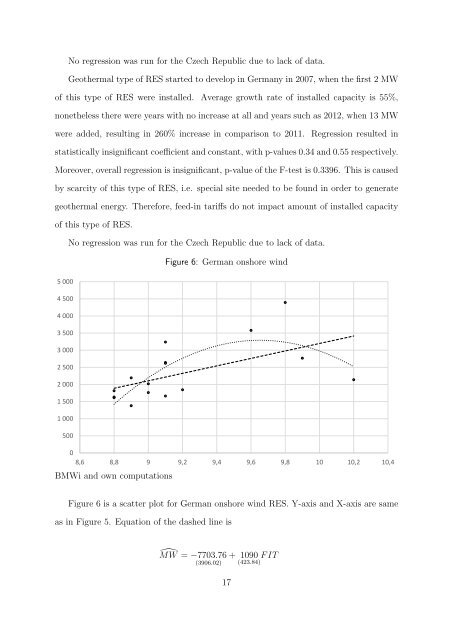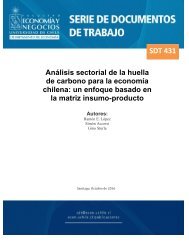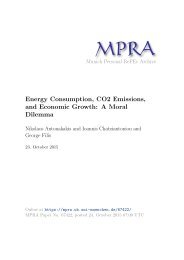MPRA
n?u=RePEc:pra:mprapa:75444&r=env
n?u=RePEc:pra:mprapa:75444&r=env
Create successful ePaper yourself
Turn your PDF publications into a flip-book with our unique Google optimized e-Paper software.
No regression was run for the Czech Republic due to lack of data.<br />
Geothermal type of RES started to develop in Germany in 2007, when the first 2 MW<br />
of this type of RES were installed. Average growth rate of installed capacity is 55%,<br />
nonetheless there were years with no increase at all and years such as 2012, when 13 MW<br />
were added, resulting in 260% increase in comparison to 2011. Regression resulted in<br />
statistically insignificant coefficient and constant, with p-values 0.34 and 0.55 respectively.<br />
Moreover, overall regression is insignificant, p-value of the F-test is 0.3396. This is caused<br />
by scarcity of this type of RES, i.e. special site needed to be found in order to generate<br />
geothermal energy. Therefore, feed-in tariffs do not impact amount of installed capacity<br />
of this type of RES.<br />
No regression was run for the Czech Republic due to lack of data.<br />
Figure 6: German onshore wind<br />
5 000<br />
4 500<br />
4 000<br />
3 500<br />
3 000<br />
2 500<br />
2 000<br />
1 500<br />
1 000<br />
500<br />
0<br />
8,6 8,8 9 9,2 9,4 9,6 9,8 10 10,2 10,4<br />
BMWi and own computations<br />
Figure 6 is a scatter plot for German onshore wind RES. Y-axis and X-axis are same<br />
as in Figure 5. Equation of the dashed line is<br />
̂MW = −7703.76<br />
(3906.02)<br />
17<br />
+ 1090<br />
(423.84) F IT








